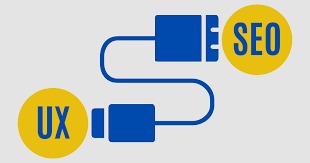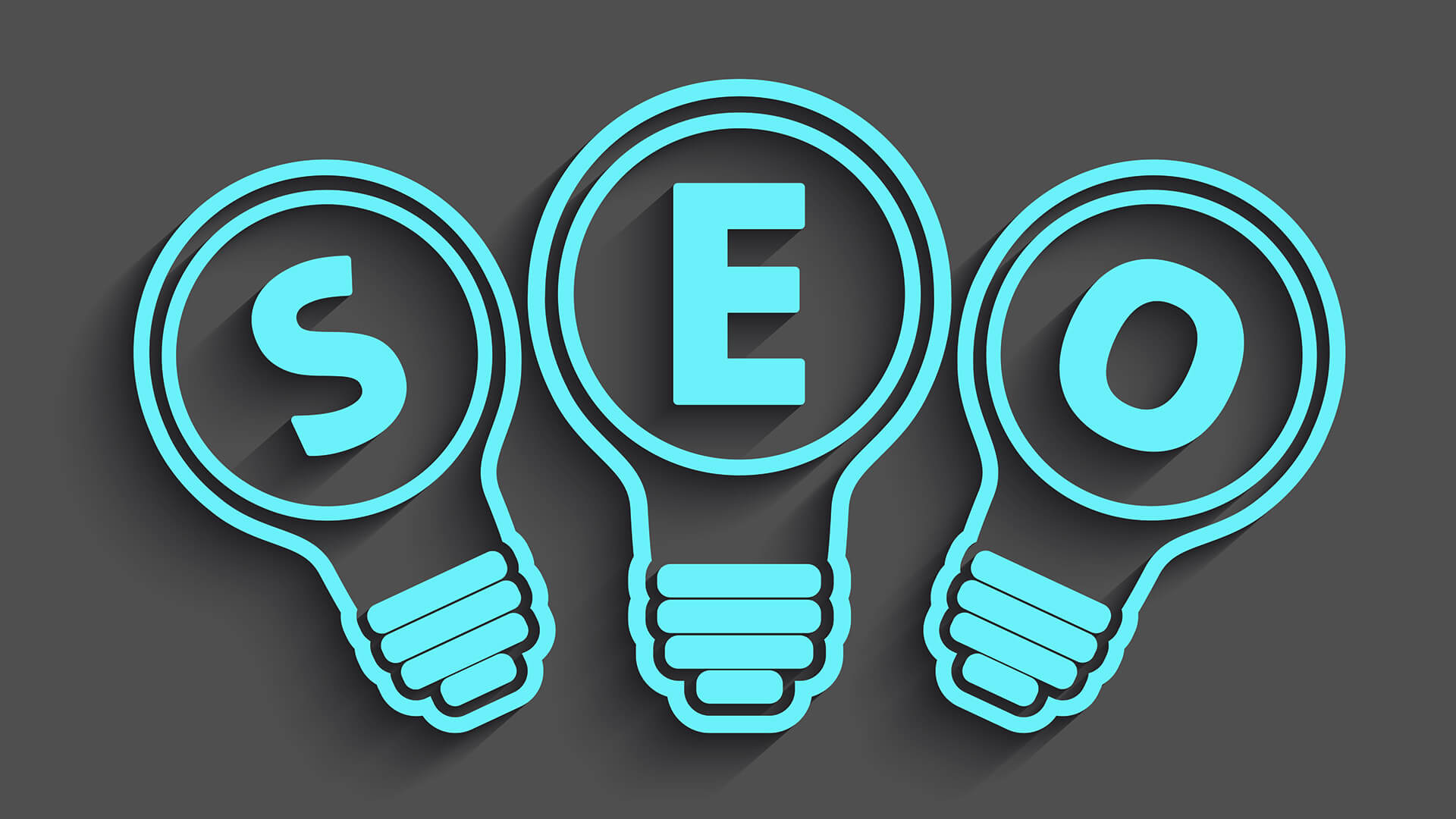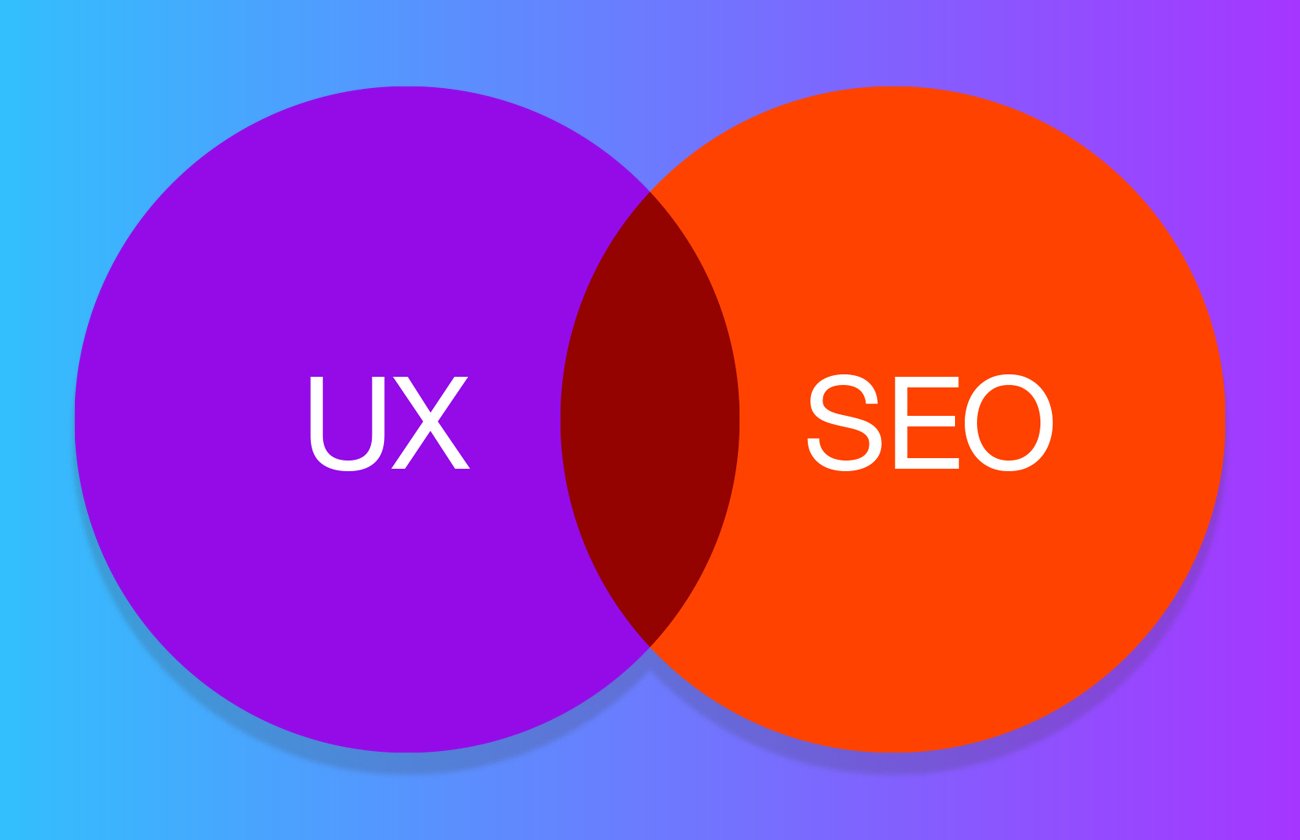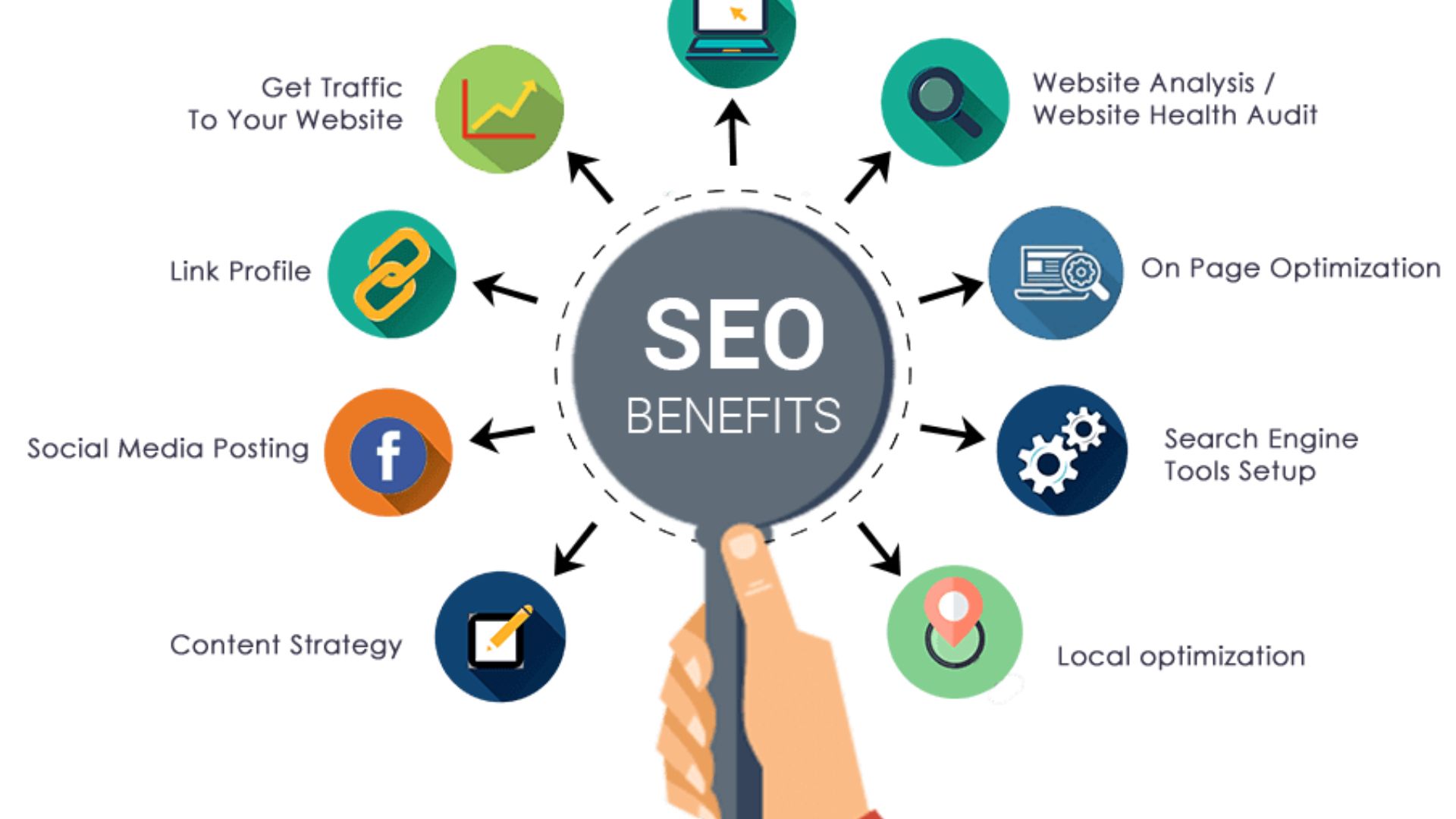
Because Google cares a lot about what users want and how they feel, UI/UX design has become an essential part of optimizing websites. There’s more to the website that captures the attention. When UX designers work on a website experience, they need to think about more than just the layout, colors, and fonts.
They also need to think about technical things like site speed, tracking, and data. X is becoming more and more critical for SEO. Even though UX and SEO are two different fields, they are not entirely separate. It's essential to know how UX and SEO work together because UX is becoming more and more critical for SEO.
To connect users with the information they’re looking for, search engine algorithms assess the pertinence of a page’s content to the user’s search question by studying topics and relevant keywords. In this article, we will discuss whetherIs SEO part of UX.
What Is UX, And Why Does It Matter?
UX stands for user experience. It tells you how good or bad your experience is with a product or service. Professionals in user experience (UX) create good user experiences so that you can quickly complete your tasks and goals with little trouble or confusion.
Think about the job of buying movie tickets. You could use Google to find the name of the movie theater near you, click on its website, and then use the search function to find out what movies are playing. When you find a movie you want to see, you buy your tickets by going through the checkout process. After you pay for something, you'll get an email with your tickets. A user's experience is made up of all the different steps in that process.
You'll have a good user experience if the process is quick, straightforward, and easy to follow, with a clear way from A to B. You won't like using it if it's full of mistakes, missing data, takes a long time to start, or has too many complicated steps.
What Is SEO, And Why Does It Matter?
"Search engine optimization" is what SEO stands for. SEO is both a businessand a technical field that tries to get free traffic to a website and move it up in the search results. Think about what happens when you use Google to look for something. As soon as you put your question into the search area, Google will show you a list of websites that are related to what you ask for.
To top it off, it ranks them from best to worst based on how relevant and valuable they are. There may be a few hits at the very top that say "Ad" next to them. The websites in that spot paid to be there.
The results below those, on the other hand, got there naturally, which means they didn't pay to be there; instead, they did well because of good search engine optimization. A substantial 67% of clicks are directed to the first five results displayed in search engine rankings. (Source: WP Forms)
What Elements And Factors Does SEO Consider?
Search engine optimization is an ongoing process that takes a lot of different things into account. There isn't just one thing that makes SEO "good." You have to do a lot of different things and keep up with how search engines change their methods.
Keyword Research
Effective keyword research is foundational to a successful SEO strategy. It involves a comprehensive understanding of what your target audience is actively searching for online.
By identifying and incorporating relevant keywords and queries into your website and content, you align your digital presence with the specific interests and needs of your audience. This strategic approach enhances the likelihood of your content being discovered by search engines and, ultimately, by your intended audience.
Content Creation
Creating high-quality, informative content is a critical component of SEO. This involves developing various forms of content, such as blog articles, that directly address the interests and queries of your target users.
For instance, if your business revolves around a plant shop, your content might focus on topics like plant care tips for different plant types. Such content not only establishes your authority in the field but also provides valuable information that attracts and engages your audience.
On-Page SEO
On-page SEO is about optimizing individual content pages to enhance their visibility and accessibility. This involves ensuring that each piece of content you publish is not only relevant but also clear, well-structured, and easily understandable by both search engines and human users.
A significant 75% of usersdo not navigate beyond the first page of search results, highlighting the importance of ranking well for visibility. A well-optimized page not only ranks higher in search results but also provides a positive user experience, contributing to increased user satisfaction and engagement.
Link Building
Link building is a crucial aspect of SEO that establishes the credibility and trustworthiness of your website in the eyes of search engines. This process involves acquiring links from other reputable websites that point to pages on your site.
These external endorsements signal to search engines, notably Google, that your content is valuable and trustworthy. As a result, your website is deemed worthy of a higher ranking in search results, contributing to improved online visibility.
Technical SEO
While on-page SEO focuses on content, technical SEO addresses the behind-the-scenes technical aspects that impact how search engines crawl and index your website. Technical SEO encompasses factors such as website loading speed and data structure.
Ensuring that your website is technically optimized not only improves search engine visibility but also enhances the overall performance of your site, contributing to a smoother user experience. This technical foundation is essential for achieving and maintaining a robust online presence.
5 UX Best Practices For SEO
Simplify Your Site’s Navigation
Make it easy for people to find the data they need. Use bullet points, lists, titles, and images to organize your information in a way that is easy to read and good for SEO. In the end, you want people to find their way around your site easily.
Complicated menu systems are better for SEO, but they can make the user experience worse, which can make them leave faster. Most of the time, SEO-friendly routing means having fewer pages.
Utilize UX Design To Support SEO-Friendly Layouts
A well-thought-out design affects how visitors behave and is directly linked to good SEO marketing. It helps the person find the proper knowledge, understand it, and take the desired action. Search bots can better judge the page's importance with the help of structure.
There are many situations where the style and formatting of information can mess up SEO. The simple reason is that things that look good, like titles that are the right size and just the right amount of text, can hurt SEO.
Mobile-First And Responsiveness
Google strongly advises using flexible design to make sure users have a good experience on all devices. Google now uses mobile-first indexing, which means that search engine robots mostly look at the mobile version of a page's content. This is because most people reach Google through mobile searches.
Make sure that your website works well on a variety of devices and screen sizes. It should be easy to read everything, and everything should be put together correctly.
Improve Page Speed
The page speed number tells you how fast the information on a page loads. The number of pictures, movies, and other media files on a website, as well as the themes and plugins that have been installed, can all slow down a page.
Pages that load more slowly have higher bounce rates, and people stay on them for less time. This is because page speeds affect how users feel and how Google ranks pages based on page speed. Compressing files, optimizing code, and cutting down on links to other pages can speed up a page.
Ensure Consistent Branding
Users make up their minds about a website in less than 50 milliseconds, and these thoughts decide whether they stay or leave. Good UI/UX design and consistent branding help make an excellent first impression and are necessary to build trustworthiness, gain user trust, and get a lot of activity. Having stable branding also helps people remember your brand.
Make tone, voice, and style rules for your content, use uniform color palettes, put logos on all digital assets, and be clever about the things you write about. For a unified experience, make sure that your marketing tactics are the same across all devices.
Intersection Of SEO And UX
The intersection of SEO (Search Engine Optimization) and UX (User Experience) is a crucial aspect of modern digital marketing, where the goals of both disciplines often converge. At the heart of this intersection lies the shared objective of enhancing visibility and ensuring user satisfaction, emphasizing the symbiotic relationship between optimizing search engines and creating positive experiences for users.
Overlapping Goals - Visibility And User Satisfaction
The primary aim of SEO is to enhance a website's visibility in search engine results, ensuring that it ranks higher for relevant queries. On the other hand, UX is centered around creating a seamless and enjoyable experience for users as they navigate through a website.
These seemingly distinct goals share a common thread: both seek to attract and retain visitors. A website that ranks high on search engines but fails to provide a positive user experience may not convert visitors into customers.
Conversely, a user-friendly website may struggle to gain traction if it doesn't appear prominently in search results. The intersection of SEO and UX, therefore, becomes a critical juncture where the success of one discipline significantly influences the other.
How SEO Principles Align With Positive User Experiences?
SEO principles, such as the use of relevant keywords, high-quality content, and efficient website structure, inherently align with the elements that contribute to positive user experiences.
For instance, optimizing content with relevant keywords not only improves search engine rankings but also ensures that users find content that aligns with their queries. Similarly, a well-structured website designed with SEO in mind often results in straightforward navigation and faster loading times, directly contributing to a positive user experience.
When SEO strategies are implemented with a focus on enhancing user satisfaction, websites can strike a balance that not only attracts search engine algorithms but also resonates with human users.
Emerging Technologies Shaping The Intersection Of SEO And UX
Emerging technologies are revolutionizing the landscape of digital marketing, particularly in how they intersect with the realms of SEO (Search Engine Optimization) and UX (User Experience). As technology continues to advance, several key trends are shaping the way businesses approach the fusion of SEO and UX for enhanced online presence and user satisfaction.
Voice Search Optimization
With the proliferation of voice-activated devices and virtual assistants, optimizing content for voice search has become imperative. SEO strategies are evolving to incorporate natural language queries, and websites are adapting to provide concise, conversational responses.\
This not only aligns with SEO best practices but also enhances the overall user experience, catering to the growing base of users relying on voice-activated search.
Artificial Intelligence (AI) And Machine Learning
AI and machine learning algorithms are increasingly influencing how search engines rank content. Understanding user behavior, preferences, and intent allows these technologies to personalize search results. For UX, this means a more tailored and relevant experience, while SEO benefits from improved user engagement metrics, positively impacting search rankings.
Mobile-First Indexing
As mobile usage continues to dominate, search engines like Google are prioritizing mobile-first indexing. Websites that prioritize mobile responsiveness and a seamless user experience on smaller screens are rewarded with higher search rankings. This convergence of SEO and UX emphasizes the importance of delivering an optimized experience across various devices.
Core Web Vitals
Google's Core Web Vitals have become a focal point in SEO, emphasizing user-centric performance metrics such as page loading speed, interactivity, and visual stability. Websites that prioritize these aspects not only align with SEO guidelines but also provide a smoother and more satisfying experience for users, reducing bounce rates and increasing overall engagement.
Augmented Reality (Ar) And Virtual Reality (Vr)
AR and VR technologies are reshaping the way users interact with content. From immersive product experiences to virtual tours, integrating AR and VR not only enhances the visual appeal of a website but also contributes to increased user engagement. Search engines, in turn, recognize and reward such immersive experiences, reinforcing the interplay between cutting-edge technology, SEO, and UX.
How Does User Experience Affect SEO?
The connection between SEO and user experience (UX) is evident in the key metrics that search engines use to evaluate websites.
Time On Page
When users spend more time on a page, it suggests that the content is exciting and valuable. This positive user experience influences SEO rankings.
Bounce Rate
The bounce rate indicates the percentage of visitors leaving a site after viewing just one page. A high bounce rate signals a potential problem with user experience, which can lead to lower search rankings. On the flip side, a low bounce rate is seen as a positive sign of engaging content and contributes to better SEO.
Engagement
Search engines now consider metrics like likes, shares, and comments. These actions reflect user satisfaction and interest, contributing to improved SEO performance.
Pages Per Session
The number of pages a user views in one session is crucial for both UX and SEO. A higher count suggests that visitors find the site engaging and comprehensive, positively affecting SEO rankings.
Rankings
Ultimately, the impact of user experience on SEO is most evident in search rankings. Search engines prioritize sites that offer a positive user experience, rewarding them with higher rankings. Websites that prioritize user experience principles are more likely to rank well in search results, attracting more organic traffic and improving online visibility.
Frequently Asked Questions
Why Is Mobile-First Indexing Important For Both SEO And UX?
With mobile usage dominance, prioritizing mobile responsiveness ensures higher search rankings and provides a seamless user experience on various devices.
How Do Core Web Vitals Contribute To SEO And User Satisfaction?
Core Web Vitals, focusing on page speed, interactivity, and visual stability, align with SEO guidelines and provide a smoother, more satisfying user experience.
In What Ways Does AI Influence Both SEO And UX?
AI personalizes search results based on user behavior, enhancing UX through tailored experiences and positively impacting SEO by improving engagement metrics.
Is SEO An Integral Part Of UX Design?
Yes, SEO and UX are interconnected as they both aim to enhance online visibility and user satisfaction.
Conclusion
The symbiotic relationship between SEO and UX is undeniable, as both fields converge to enhance online presence and user satisfaction. The evolution of digital marketing, influenced by emerging technologies like voice search optimization, AI, mobile-first indexing, Core Web Vitals, and AR/VR, underscores the dynamic interplay between cutting-edge technology, SEO strategies, and UX design. A lot of people ask whether Is SEO part of UX.
SEO principles align seamlessly with positive user experiences, emphasizing the importance of relevant keywords, high-quality content, efficient website structure, and a focus on user satisfaction. As user-centric metrics such as time on page, bounce rate, engagement, and pages per session directly impact SEO rankings, it becomes clear that effective SEO is, indeed, an integral part of optimizing user experiences in the ever-evolving digital landscape.





